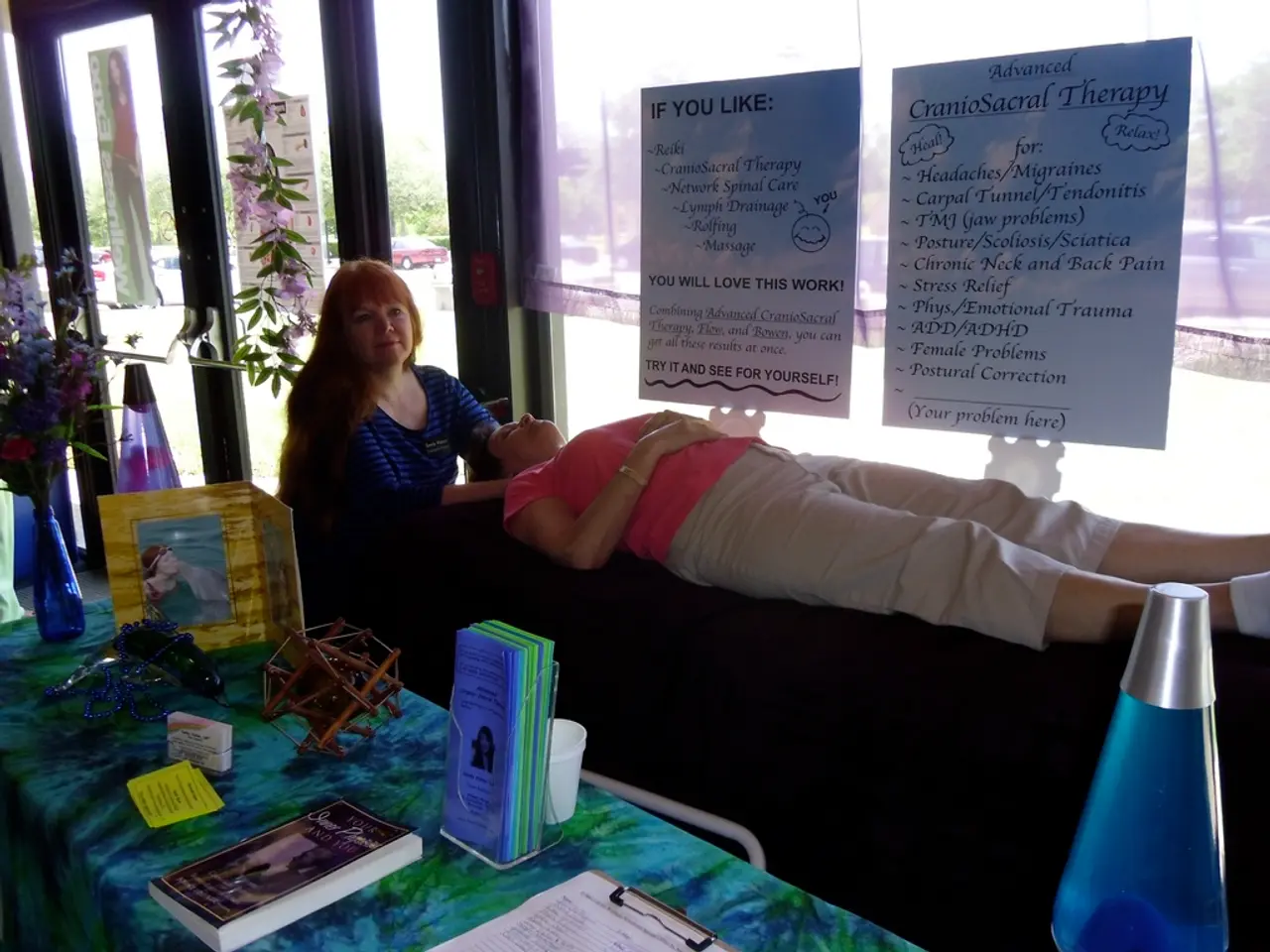Anxiety tics: Uncontrollable, repetitive muscle movements or vocalizations often linked to emotional distress. Treatment options may include medication, therapy, and lifestyle changes.
In times of heightened stress or anxiety, some individuals may experience involuntary movements or muscle spasms known as anxiety twitches, or anxiety tics. These sudden and uncontrollable spasms can manifest in various body parts, such as the eyes, arms, legs, neck, or throat, and can take the form of nervous habits like jaw clenching, hair twisting, skin picking, nail-biting, or teeth grinding [1].
Anxiety twitches, unlike tics associated with Tourette's syndrome, are not driven by a neurological urge and can affect anyone at any stage of life [2]. They can be classified as simple, lasting only a moment and involving fewer muscles, or complex, using multiple muscles and sometimes having a pattern of multiple actions in a row [3].
Effective management strategies for anxiety-related twitches or tics encompass a combination of lifestyle modifications, relaxation techniques, behavioural therapies, and in some cases, medication [4].
Relaxation techniques such as yoga, meditation, deep breathing exercises, progressive muscle relaxation, and mindfulness can help reduce stress levels and potentially decrease twitching or tics associated with anxiety [5]. Lifestyle modifications, including ensuring adequate hydration, avoiding stimulants like caffeine and alcohol, maintaining a balanced diet rich in essential nutrients, getting enough sleep, and engaging in regular physical activity, support overall stress reduction and muscle health [1][5].
For tic disorders, including those worsened by anxiety, comprehensive behavioural intervention for tics (CBIT) is an evidence-based therapy that helps manage and reduce tic severity [2]. If tics are more severe or debilitating, medications may be prescribed, such as alpha-2 agonists like clonidine and guanfacine, or neuroleptics (antipsychotic medications) which limit dopamine activity [2][4].
Physical therapy and targeted exercises, possibly guided by a physical therapist, can alleviate muscle tension and reduce twitching [1][3]. Engaging in low-stress activities like journaling, nature walks, art therapy, and volunteering may help reduce chronic anxiety and its physical manifestations [5].
It's essential to consult a healthcare provider to tailor treatments, which may combine these therapies for optimal results [1][2][5]. Therapy techniques that can help treat anxiety twitches include Cognitive Behavioral Therapy (CBT), Habit Reversal Therapy (HRT), Exposure and Response Prevention (ERP), and Comprehensive Behavioral Intervention for Tics (CBiT) [6].
Benzodiazepines are sedatives that can be used to manage severe, acute anxiety in the short term, while Selective Serotonin Reuptake Inhibitors (SSRIs) and Serotonin-Norepinephrine Reuptake Inhibitors (SNRIs) are medications that can be prescribed to help regulate mood and minimize anxiety symptoms [7].
It's crucial to distinguish anxiety twitches from Tourette's syndrome, a neurological disorder where tics, both motor and vocal, are triggered by a premonitory urge and must last for at least a year to meet DSM-5 criteria [8]. Tics can be classified into two main types: motor tics, involving sudden, involuntary physical movements, and vocal tics, involuntary sounds [9]. Tourette's, Persistent motor or vocal tic disorder, and Provisional tic disorder are three tic disorders listed in the Diagnostic and Statistical Manual of Mental Disorders, Fifth Edition (DSM-5) [8].
In conclusion, managing anxiety twitches requires a personalised approach, and seeking advice from a healthcare professional is vital to create an effective treatment plan. By implementing lifestyle modifications, relaxation techniques, behavioural therapies, and, if necessary, medication, individuals can find relief and better manage their anxiety-related twitches or tics.
Incorporating science and mental health practices, one can identify relaxation techniques such as yoga, meditation, and deep breathing exercises as essential tools in managing anxiety-related twitches or tics [5]. Furthermore, adopting a health-and-wellness lifestyle, which includes maintaining a balanced nutrition rich in essential nutrients, can support overall muscle health and help alleviate twitching or tics associated with anxiety [1][5].






